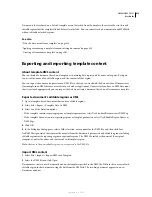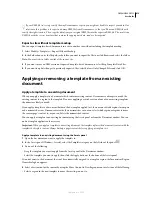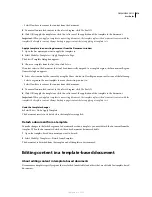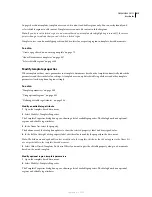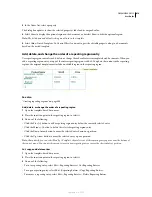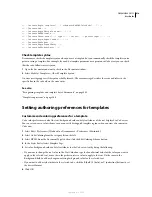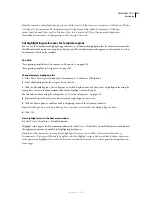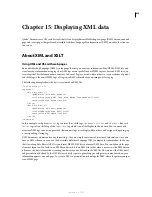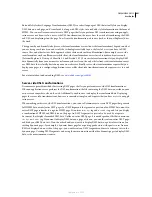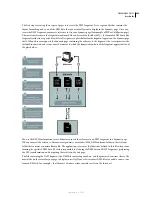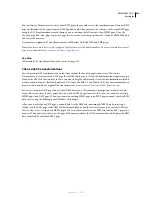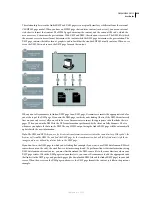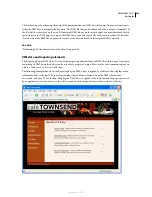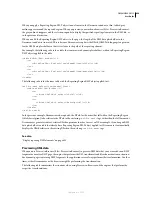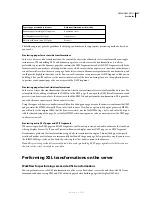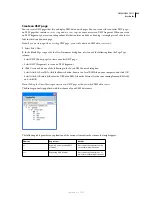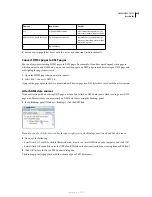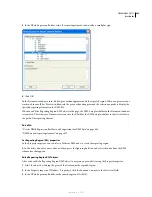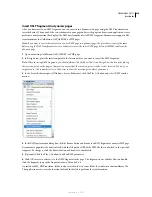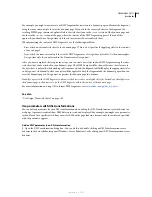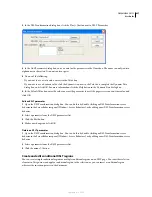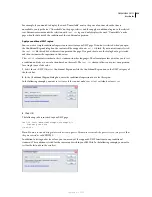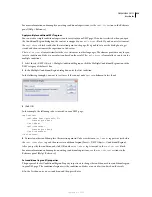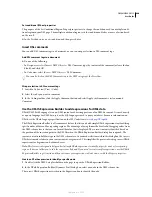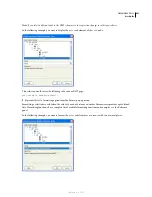
DREAMWEAVER CS3
User Guide
426
When you apply a Repeating Region XSLT object to an element in the Document window, a thin, tabbed, gray
outline appears around the repeated region. When you preview your work in a browser (File > Preview in Browser),
the gray outline disappears and the selection expands to display the specified repeating elements in the XML file, as
in the previous illustration.
When you add the Repeating Region XSLT object to the page, the length of the XML data placeholder in the
Document window is truncated. This is because Dreamweaver updates the XPath (XML Path language) expression
for the XML data placeholder so that it is relative to the path of the repeating element.
For example, the following code is for a table that contains two dynamic placeholders, without a Repeating Region
XSLT object applied to the table:
<table width="500" border="1">
<tr>
<td><xsl:value-of select="rss/channel/item/title"/></td>
</tr>
<tr>
<td><xsl:value-of select="rss/channel/item/description"/></td>
</tr>
</table>
The following code is for the same table with the Repeating Region XSLT object applied to it:
<xsl:for-each select="rss/channel/item">
<table width="500" border="1">
<tr>
<td><xsl:value-of select="title"/></td>
</tr>
<tr>
<td><xsl:value-of select="description"/></td>
</tr>
</table>
</xsl:for-each>
In the previous example, Dreamweaver has updated the XPath for the items that fall within the Repeating Region
(title & description) to be relative to the XPath in the enclosing
<xsl:for-each>
tags, rather than the full document.
Dreamweaver generates context-relative XPath expressions in other cases as well. For example, if you drag an XML
data placeholder to a table that already has a Repeating Region XSLT object applied to it, Dreamweaver automatically
displays the XPath relative to the existing XPath in the enclosing
<xsl:for-each>
tags.
See also
“Display repeating XML elements” on page 432
Previewing XML data
When you use Preview in Browser (File > Preview in Browser) to preview XML data that you’ve inserted in an XSLT
fragment or an entire XSLT page, the engine that performs the XSL transformation differs from situation to situation.
For dynamic pages containing XSLT fragments, the application server always performs the transformation. At other
times, either Dreamweaver or the browser might be performing the transformation.
The following table summarizes the situations when using Preview in Browser, and the engines that perform the
respective transformations:
September 4, 2007

